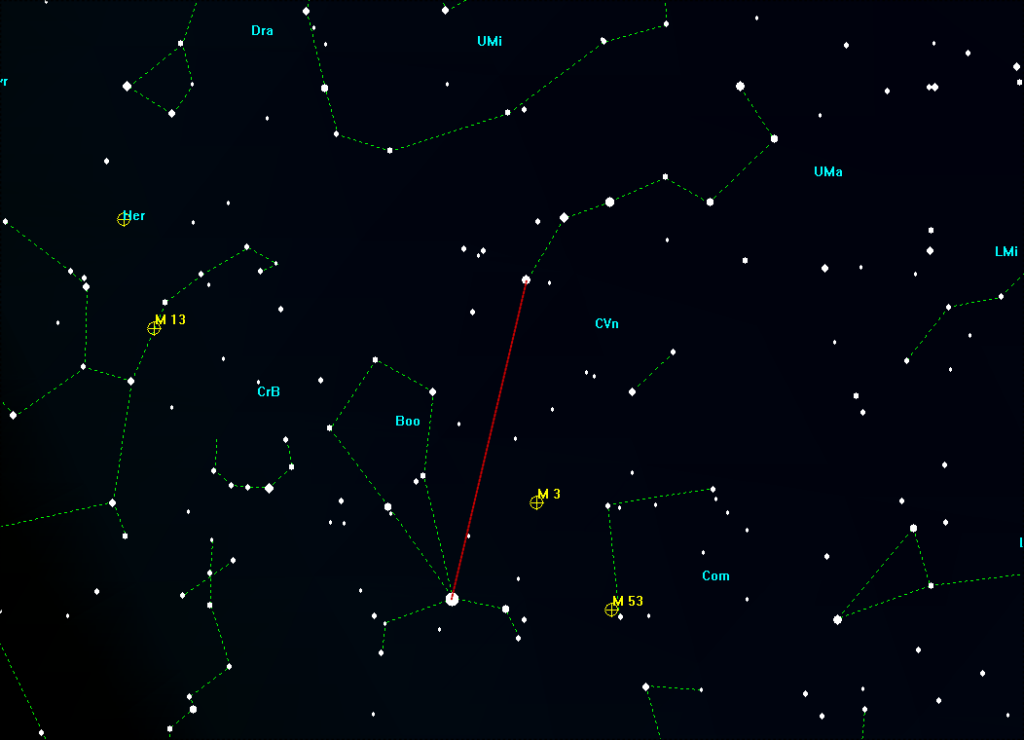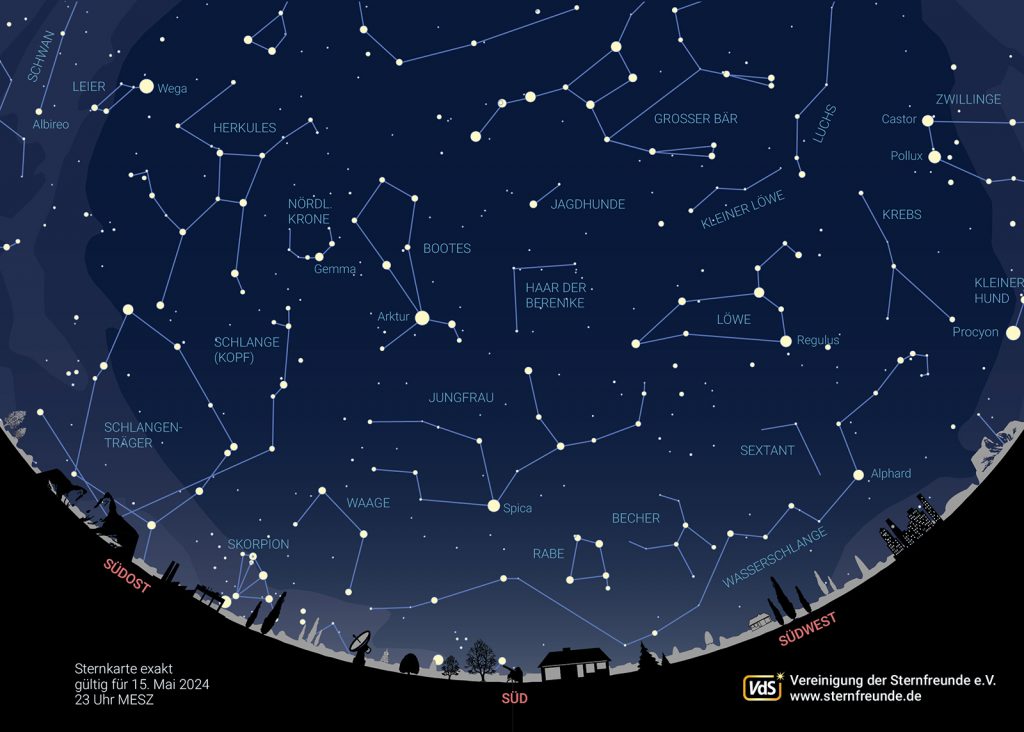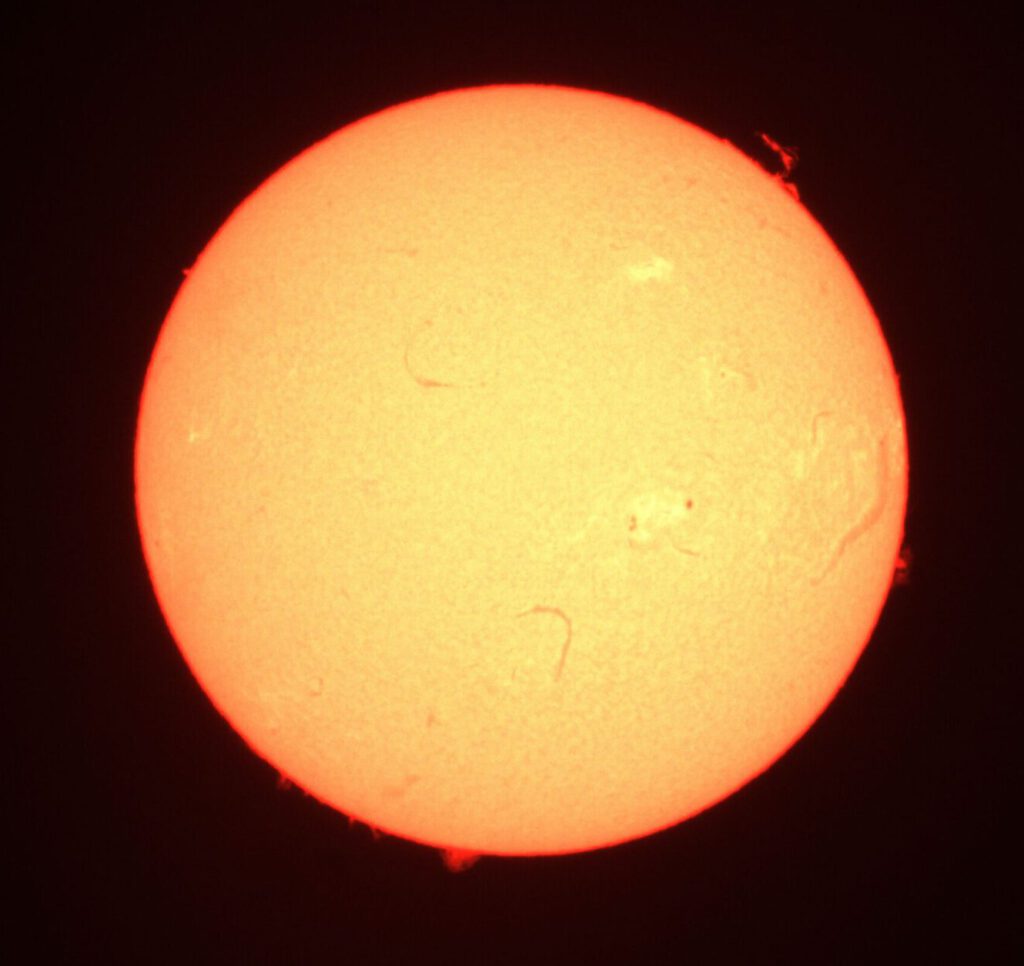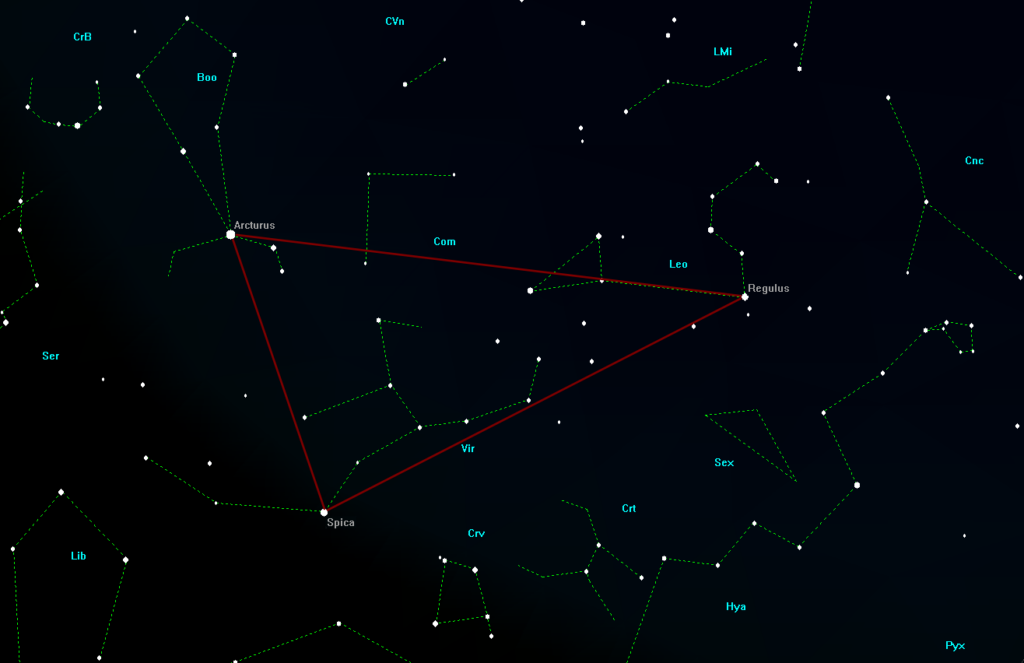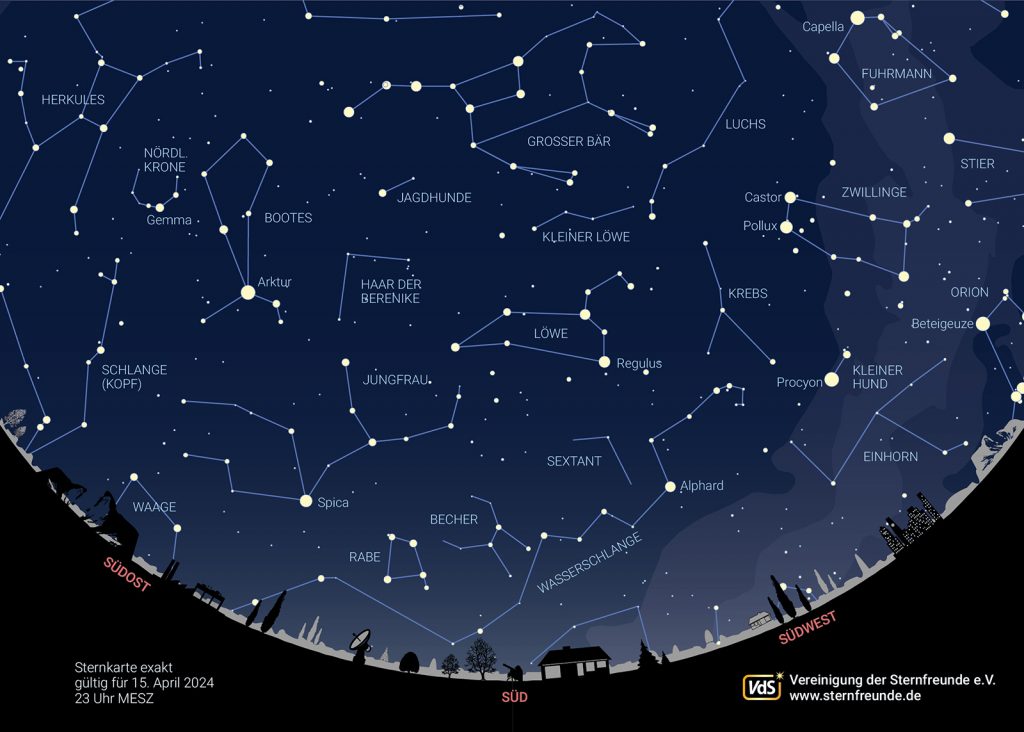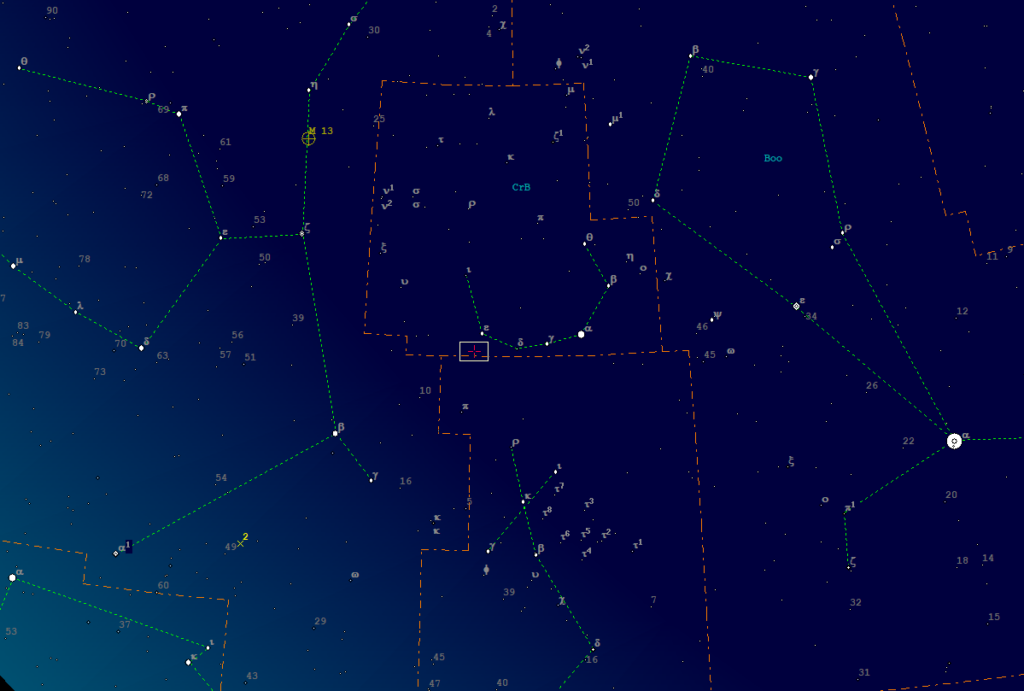The starry sky in May 2024
Due to the increasing length of the day, the useful observation times will be reduced from five hours at the beginning of May to just two hours at the end of the month. This would mean that the start of observations of galaxies and similar faint objects would shift from 23:00 CEST to 0:30 CEST. For this reason the observatory is only open from the beginning of May to the end of August under certain conditions. These include, for example Observation of the sun and moon on some weekends. The times will be announced via a ticker on our main page.
SUN AND MOON
In the spring month of May, the day length for Zweibrücken increases from 14 hours and 46 minutes at the beginning to 16 hours and 4 minutes at the end of the month. The maximum height of the sun on May 31 is already an impressive 62 degrees.
The full moon on May 23 will affect the observation of fainter objects.

On May 5 at around 5:00 a.m., the narrow crescent of the waning moon will pass just under one degree north of Mars. However, a small telescope is needed to observe it. The occultation of Mars remains hidden from us; it only takes place in a strip from Madagascar, Indonesia, south-east Asia to Japan.
PLANETS
May, like April, is poor in planets.
Mercury reaches its greatest western angular distance from the Sun on the 9th of the month at 29.3 degrees, but this is not sufficient for morning visibility, as the ecliptic is very flat in the morning sky.
Venus is approaching its upper conjunction with the Sun. Upper conjunction means that the Earth, Sun and the object, in this case Venus, are aligned. The term upper and lower conjunction is only used for Mercury and Venus.
Mars appears low in the morning sky in the last third of May. Due to its distance and the associated optical size, it remains uninteresting as an object for telescope observers.
On the 18th of the month Jupiteras seen from Earth, opposite the Sun (conjunction). It therefore remains unobservable.
Saturn continues to behave hesitantly, on the first of the month it crosses the horizon in Zweibrücken at 4:31 am, on the last of the month it rises at 2:38 am.
Uranus and Neptune are still not observed.
STARRY SKY
Direction West the twins are already in the process of setting. Cancer is already stuck in the haze layers near the horizon. Leo is still a little higher up.
In Greek mythology, the lion is often associated with the hero Hercules (Heracles). According to one source, it is said to be the Nemean Lion, who was up to mischief near the city of Nemea and harassed the inhabitants there. The first of Hercules' twelve tasks was to defeat the lion. However, every weapon bounced off his fur, so the Greek hero had to face the lion with his bare hands in order to defeat him. From then on, the skin protected Hercules from his enemies. At Hera's request, Zeus moved the lion to heaven.
About us are the hair of Berenice with a multitude of galaxies, although a medium-sized telescope is required to observe them. A little further to the east is the Bear Keeper with its bright main star, Arcturus. A little trick makes it easier to find. If you extend the three drawbar stars of the "Big Dipper" in an arc, you will come across a bright star, Arcturus.
Here is a graphic for orientation:
Next Eastbound you come across the inconspicuous constellation Hercules with its bright globular cluster M13, which is already a magnificent sight in binoculars. In the image above on the left.
Just above the southeastern horizon the summer constellation of Scorpio appears towards the middle of the month. In the Northeastthe summer constellations enter the celestial stage.
Low on the northern night sky you can see the "celestial W", Cassiopeia, on the other side of the pole star as seen from the Great Bear.
Note: To the east of the Bear Keeper is the Northern Crown, in which a free-eyed observable nova should appear by September. An article about this can be found here. A nova is, briefly explained, a periodic phenomenon in which mass flows from a red giant star onto its companion, a white dwarf. When a critical mass is reached, a new short-lived nuclear fusion (thermonuclear explosion) starts, which ejects the mass into space. This process lasts a few days.
The following sky view is valid for May 1 at midnight, May 15 at 11 pm and May 30 at 10 pm.

